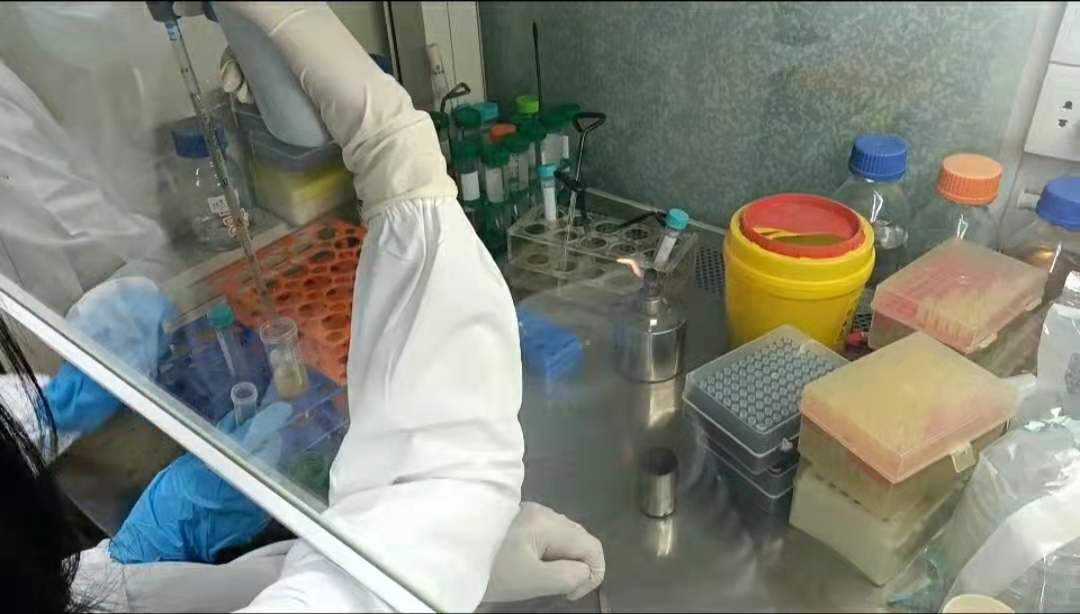Safety
Before entering the lab, we received lab safety training in online meetings, watched security training videos, and were skilled in the palm of our hands. With the basic safety rules of the laboratory and common equipment such as pipettes, we realize that safety is the most important thing, we should strictly abide by the rules, ask our instructors when we encounter problems, and avoid causing danger or damage to the laboratory technicians.
Safety training
In the preparation process, we received comprehensive laboratory safety training for researchers from Wuhan University and Lanzhou University, such as:
1. Learning the properties of each reactant, chemical substance and sample organism, such as toxicity and hazard.
2. Learning how to use laboratory equipment and machines to ensure the smooth progress of the experimental process and avoid accidents that may occur during the experimental operation.
3. The instructor mentioned to us the basic rules of the laboratory. Food and beverages are prohibited from being brought into the laboratory. Don't touch the experimental instrument without gloves.
Safety
Some of the laboratory equipment we use, especially glassware, can be dangerous if broken. Also, some of the reagents we use are irritating and irritate the skin or eyes. When using E. coli samples, it can contaminate the equipment and possibly make the experimenter sick. When exposed to laboratory equipment and colonies, we should wear gloves and lab clothes. We activate E. coli in the ultra-clean workbench. At the same time, we have clearly isolated contaminated and operating areas, which is a powerful safety precaution for experimenters. After completing the daily tasks, the biological waste is collected separately and submitted to the school bio-hazardous chemicals treatment center in time for unified treatment.
Safety goals
1. Prior to the experiment, risk assessment is carried out on the reagents, microorganisms, materials used, substances produced during the experiment, and protective measures are designed in advance.
2. In the course of the experiment, standardised laboratory safety techniques are used to reduce the possibility of error in the results of the experiment and the risk of the experiment, so as to ensure that the experimental process can proceed smoothly.
3. During the experiment, protective clothing, such as gloves, masks, laboratory coats, etc., should be worn to reduce the risk of infection and injury caused by chemical substances and sample bacteria used in the experiment.
4. laboratory to avoid the spread of the disease.
5. Waste and samples should be properly managed to protect the environment. We comply with all safety and security rules officially provided by iGEM and all terms mentioned above.


Lab protocol
1. Don’t bring food and drinks into laboratory.
2. We should always wear gloves, lab coats, goggles and masks when doing experiments.
3. Disinfect the equipment with alcohol before the experiment.
4. All parts of the experiment must be supervised by professionals.
5. Disposable wasted equipment may not be reused.
6. Note that the muzzle tube is used vertically and not horizontally.
7. Waste reagents and the reagents after contacting with air should not be put back into original container.
8. Waste materials and reactants should be collected together.
9. After experiment, any reactants and waster samples should be collected together.
10. The laboratory after the experiment should be cleaned again with ethanol.
11. Students should be familiar with procedures.
12. The lid of the container should be closed immediately after the samples and reagents we needed have been collected
13. When using UV machines, pay attention to protection
Facility security

Our experiment was carried out in a professional laboratory at Wuhan University. We used an ultra-clean table to ensure our safety and reduce the experimental errors that could cause the bacterial solution we are using to be exposed to. The laboratory has a sound exhaust pipe, gloves and other safety protection equipment, are in line with medical testing standards. We have been under the guidance of professionals to ensure the safe implementation of experiments, surrounding communities and the environment.

Design Safety
Our design for Nissle 1917 enables the gene behind the second starter to enhance the expression of the ADH and ALDH genes. At the same time, we designed a suicide module for the colonies used to ensure that E. coli used after the experiment did not cause environmental pollution and edited bacterial leakage. Further consideration
We use non-pathogenic E. coli Nissle 1917 as our edited sample. After the experiment, all cultures contained or in contacted with the strain should be disinfected with medical ethanol. Reagents used should not pollute the environment. All wastes that may cause contamination must be disposed of properly and uniform professional procedures applied. In the course of the experiment, in order not to pollute the environment, the final scheme was evaluated with comprehensive consideration and new potential pollution factors.
In addition, gloves, masks and waste fluids generated will be thrown into medical waste at the end of our experiments to prevent environmental pollution and leakage of bacteria in the laboratory.

